Are you looking to turn your creative vision into reality but lack the necessary funds? Securing financial support for a project can feel daunting, but with a compelling letter, you can make your case effectively. Whether it's a film, art exhibit, or innovative design, a well-crafted request can capture the attention of potential sponsors. Join me as we explore the essential elements of a funding request letter that stands out and resonatesâread on to discover how to bring your project to life!
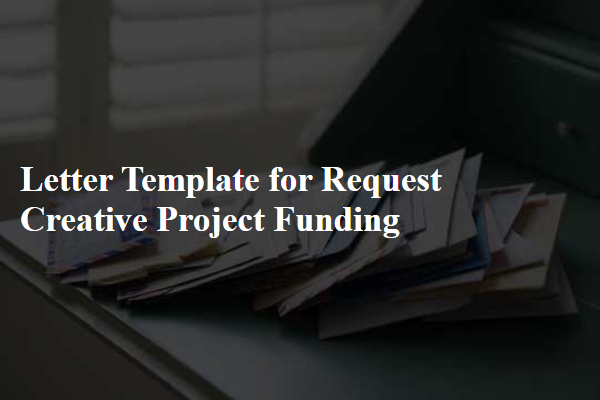
Project Overview
The creative project entails the development of an interactive art installation, designed to engage participants in a dialogue about environmental sustainability. This project, titled "Echoes of Nature," will take place in Central Park, New York City, aiming to attract both locals and tourists. The installation will feature innovative technology, such as augmented reality (AR), allowing visitors to visualize the impact of climate change on natural ecosystems. The timeline for project completion spans six months, with an estimated budget of $50,000 needed for materials, permits, and artist fees. Community workshops will be organized to involve local schools and organizations, fostering a sense of collective responsibility towards environmental issues.
Purpose and Objectives
Creative projects typically seek funding to support artistic endeavors, community engagement, and innovative initiatives aimed at social change. Funding requests should define the project's purpose, such as fostering local artists' talents, enhancing cultural heritage, or addressing community issues through creative expression. Objectives may include hosting workshops, creating public art installations, or developing educational programs that reach diverse audiences. Specific goals should include measurable outcomes, such as the number of participants engaged, artworks produced, or the impact on community cohesion. Additionally, identifying targeted locations, such as local community centers or public spaces, ensures the project resonates with the intended audience. Engaging beneficiaries, such as youth, marginalized groups, or local creative industries, highlights the project's relevance and potential for positive change.
Target Audience and Impact
Creative projects, particularly those rooted in community development, foster human connections and cultural enrichment. Target audiences often include local residents, artists, schools, and non-profit organizations, all of whom experience a transformation through engagement. Projects focusing on themes such as environmental sustainability or social justice aim to impact diverse demographics, including youth, families, and marginalized communities. Impact metrics may include participation rates (measured in individual and group involvement), outreach programs reaching over 500 individuals in local cultural centers, and increased awareness of community issues as evidenced by pre- and post-project surveys. Engaging storytelling, public performances, and collaborative workshops are pivotal in amplifying voices and fostering dialogues that resonate across the community landscape.
Budget Breakdown
A detailed budget breakdown for a creative project funding request includes several crucial categories to ensure transparency and clarity. Personnel costs, which encompass salaries and wages for all team members involved in the project, typically amounted to approximately 60% of the total budget. Equipment expenses, including tools and software necessary for production, can reach around 20% of costs. The venue rental for hosting events or workshops might require another 10% allocation, especially when located in cities like New York or Los Angeles, known for high rental prices. Promotional expenses, essential for marketing efforts through social media and print advertising, would take up roughly 5% of the budget. Lastly, the contingency fund, set aside for unexpected expenses like travel delays or material shortages, should be about 5% to ensure project resilience and flexibility.
Credentials and Past Successes
Seeking funding for a creative project requires a compelling presentation of credentials and past successes. Applicants should highlight previous achievements in similar projects, including metrics such as audience reach (e.g., over 1,000 attendees at a prior exhibition), funding obtained (e.g., grants totaling $50,000 from various organizations), and collaborations with reputable institutions (e.g., partnerships with the Museum of Modern Art). Emphasizing awards or recognitions received, such as the Best Short Film award at the 2023 Cannes Film Festival, can further establish credibility. Detailed account of project outcomes including audience engagement levels, community impact (e.g., workshops serving 200 local youth), and media coverage such as features in prominent art journals can showcase the applicant's ability to successfully execute and manage creative initiatives. Providing a portfolio with links to past works, proven financial management skills through previous project budgets, and testimonials from collaborators or beneficiaries will round out a persuasive narrative for funding considerations.
Letter Template For Request Creative Project Funding Samples
Letter template of project invitation for collaborative creative funding
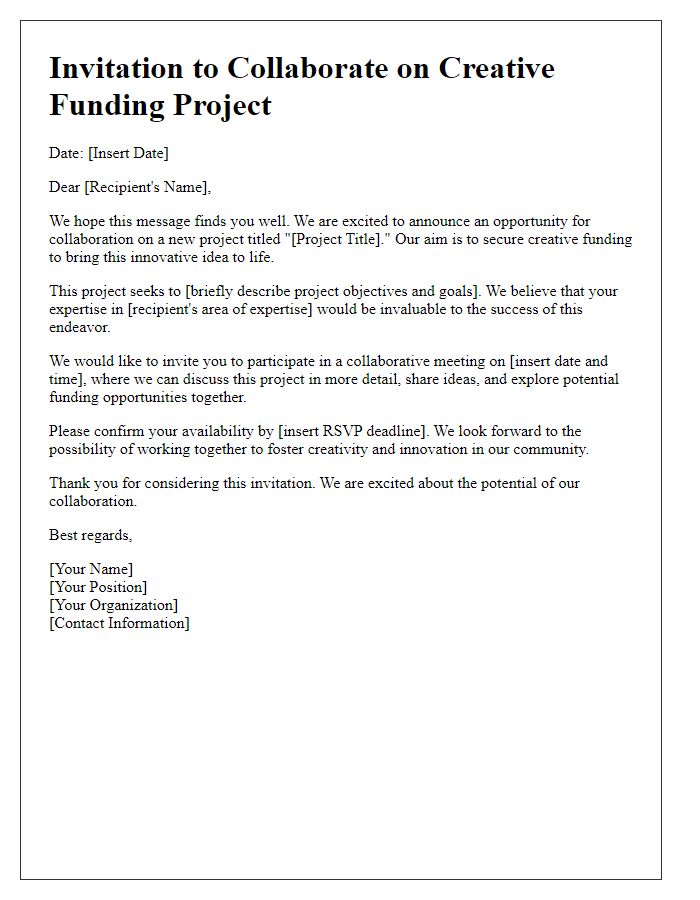

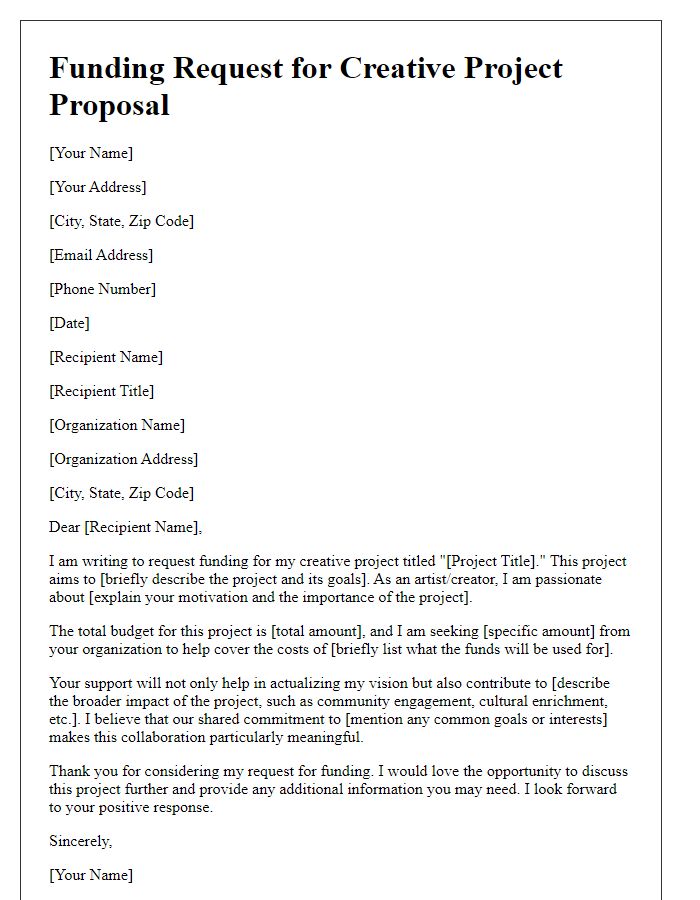
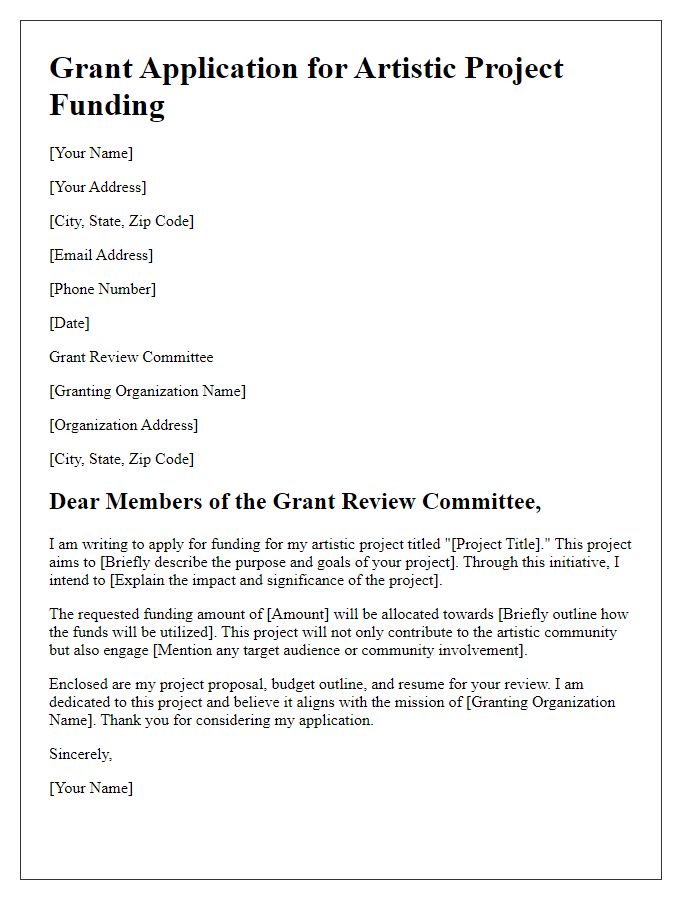
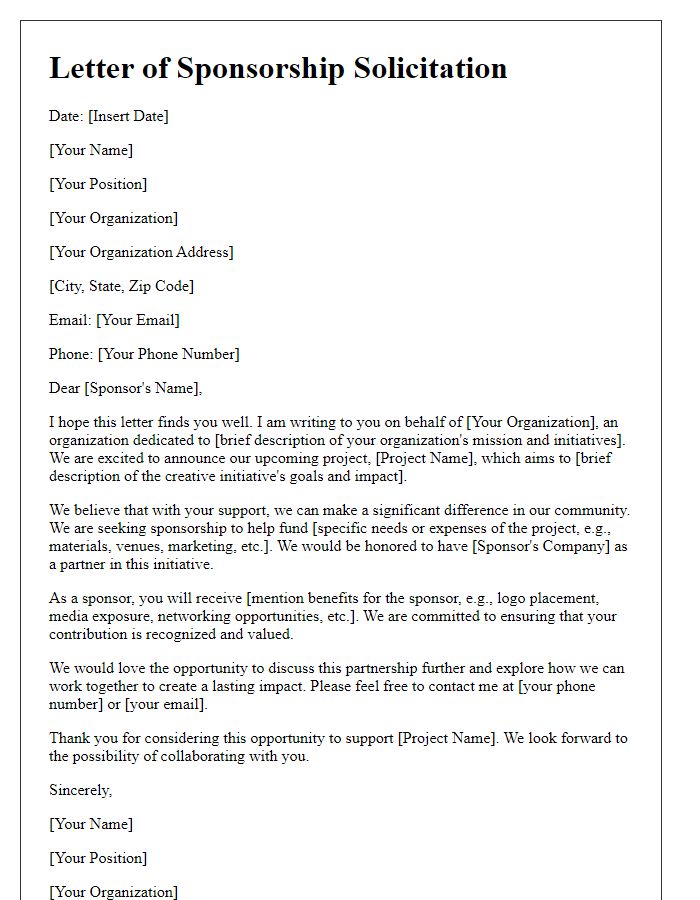
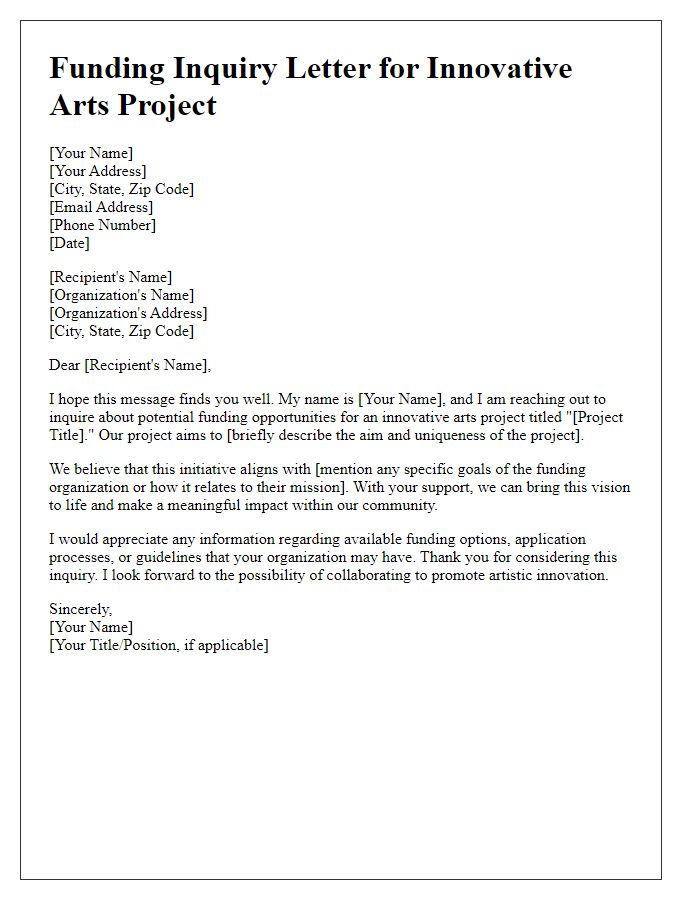
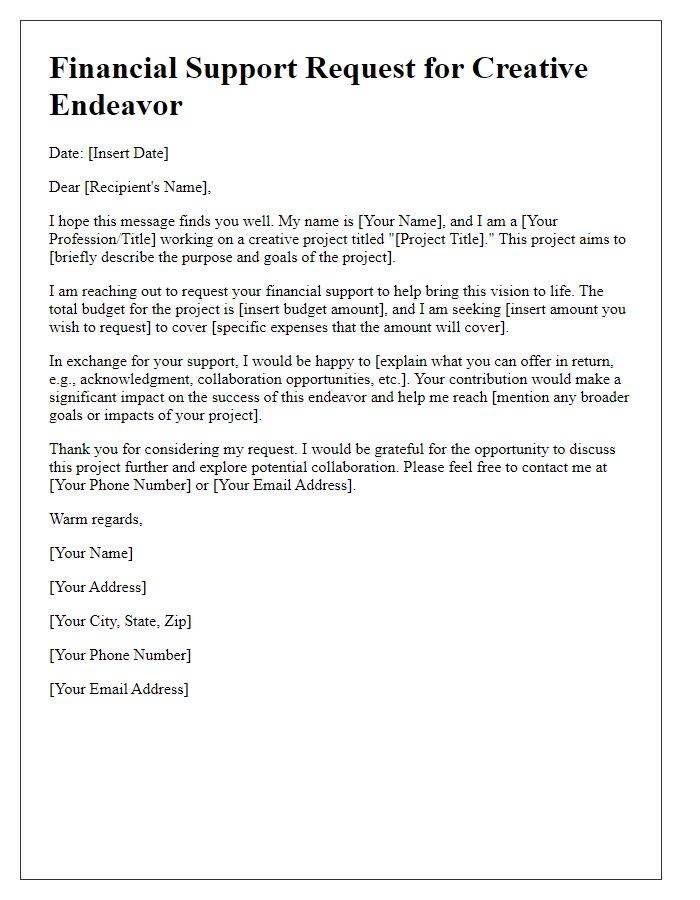
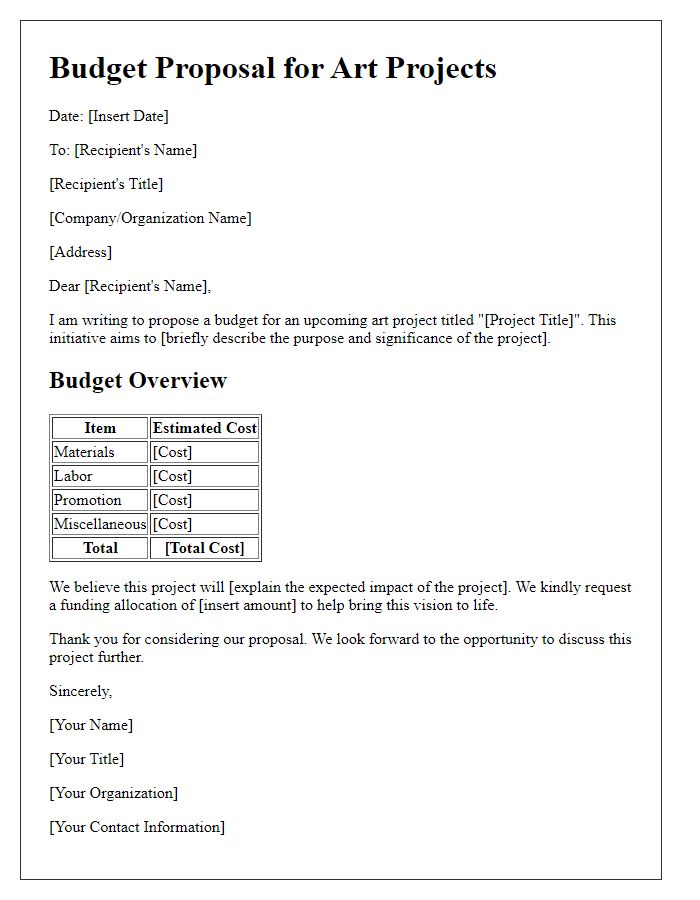
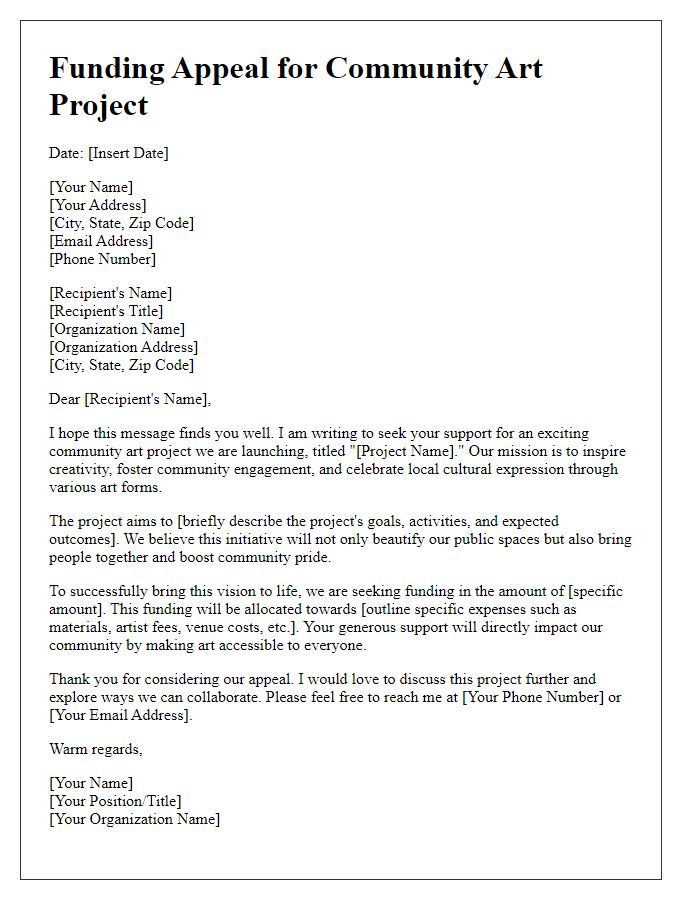
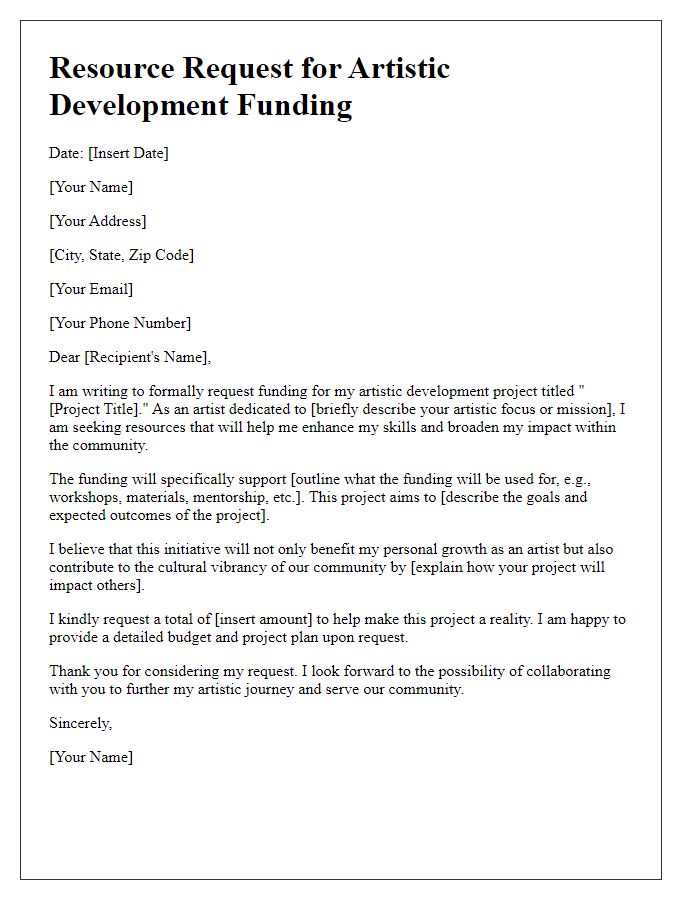



Comments